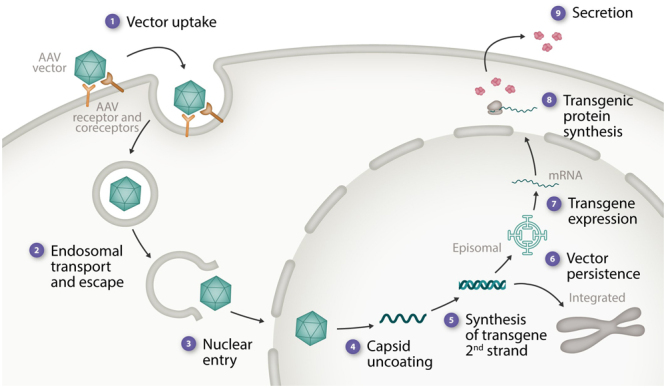Figure 1.

Elements in AAV vector delivery and expression that likely contribute to variable transgene expression levels. The stages in AAV vector delivery and transgene expression are listed along with some of the potential factors contributing to variable outcomes. (1) Vector uptake—role neutralizing anti-AAV Abs, numbers of glycan receptors, the AAV receptor, and coreceptors. (2) Endosomal transport and escape. (3) Nuclear entry—resting vs replicating cells, facilitated vs passive entry. (4) Vector capsid uncoating—speed, duration, and efficiency. (5) Synthesis of transgene second strand. (6) Vector persistence—% episomal, % integrated, influence of concatemer formation, genomic location of integrated copies. (7) Transgene expression—variable transcriptional silencing and activation (stress response elements), epigenetic remodeling of the transgene. (8) Transgenic protein biosynthesis—ER stress response, aggregate formation, and variable posttranslational modification. (9) Transgenic protein secretion and clearance—interaction with a carrier protein and clearance receptors. AAV = adeno-associated viral vectors.
